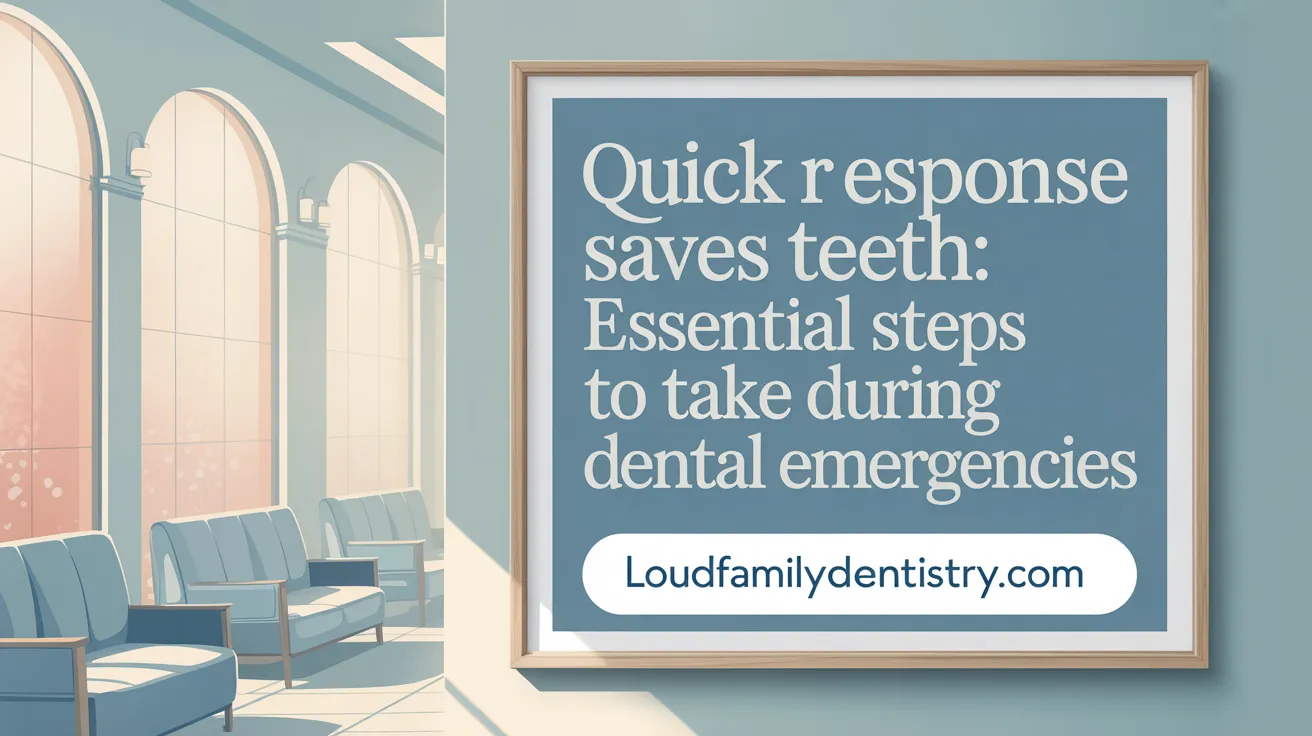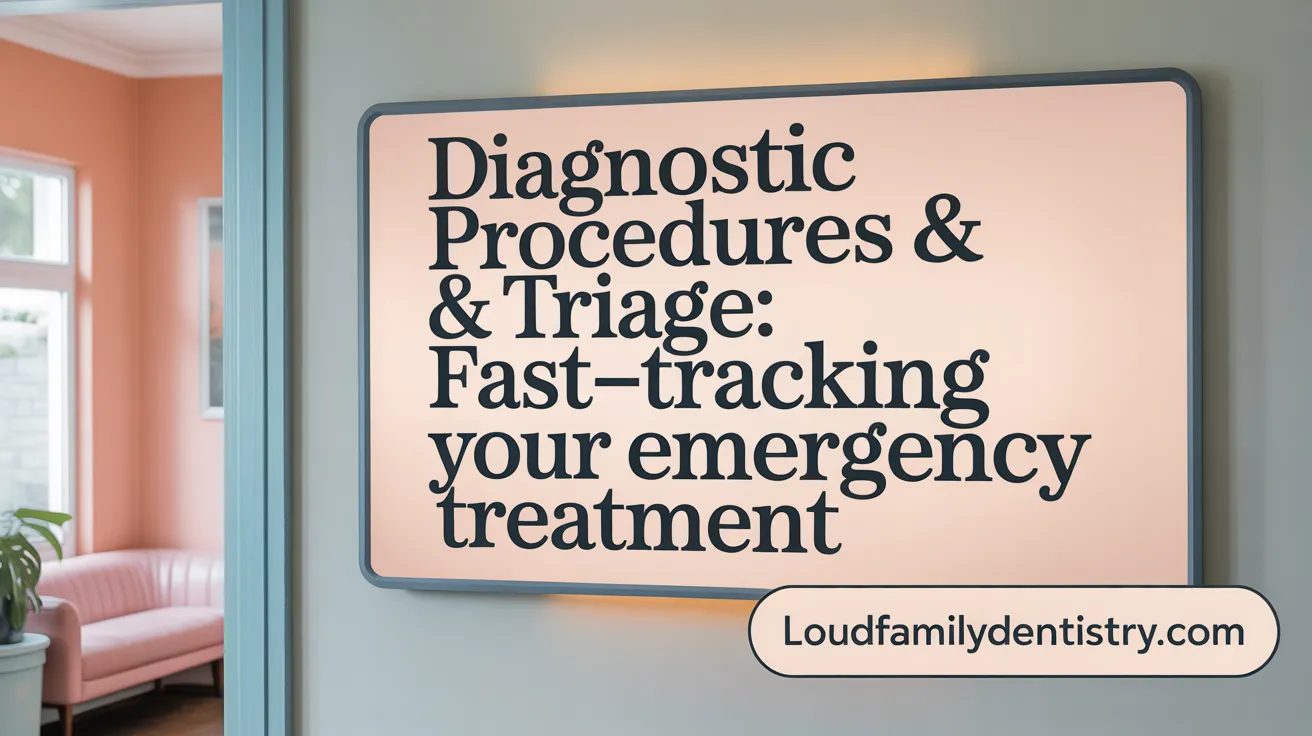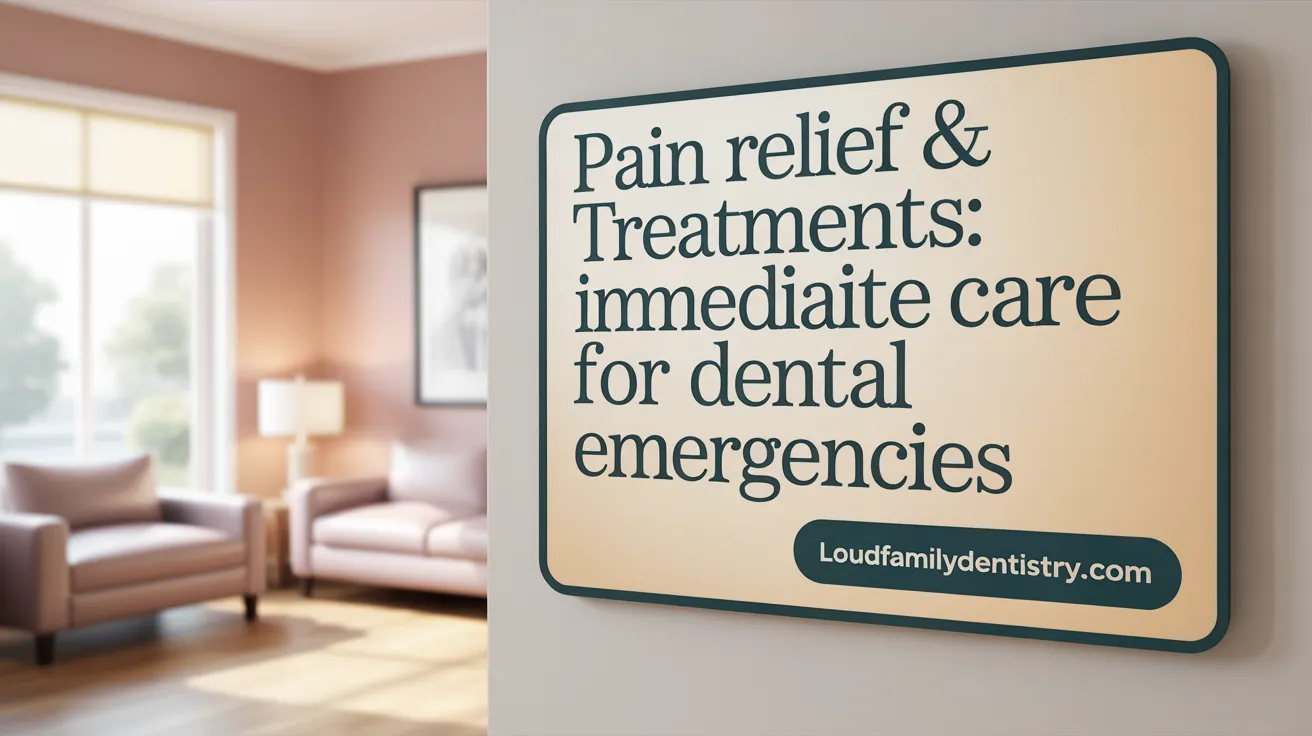Understanding the Urgency and Process of Emergency Dental Care
Dental emergencies strike without warning and require swift, specialized care to minimize pain, prevent complications, and save teeth. Knowing what to expect during an emergency dental visit can help ease anxiety and ensure prompt, effective treatment. This step-by-step guide outlines the typical experiences and protocols from the moment you contact a dental professional to the follow-up care after urgent treatment.
Recognizing Dental Emergencies and Preparing for Your Visit

What constitutes a dental emergency?
Dental emergencies are urgent oral health problems that demand immediate care to prevent serious complications. Common examples include severe toothaches, teeth that are knocked out or severely broken, dental abscesses causing swelling or infection, lost fillings or crowns, uncontrolled bleeding from the mouth, facial trauma such as broken bones, and significant soft tissue injuries inside the mouth.
Why is urgency important in dental emergencies?
Prompt treatment is critical in dental emergencies to stop bleeding, relieve intense pain, and save damaged teeth. Delaying care can lead to worsening infections, tooth loss, and more complicated procedures in the future. Some situations, like knocked-out teeth, require attention within an hour for the best chance of saving the tooth.
How should a patient prepare before their emergency dental visit?
Before visiting an emergency dentist, patients should call ahead to describe their injury or symptoms. This helps the dental team prioritize care and prepare for the specific emergency. Gather important information such as medical history, current medications, and dental insurance details. Having this ready speeds up the check-in and treatment process.
What can a patient do to manage symptoms before the appointment?
To ease discomfort at home, rinse the mouth gently with warm saltwater to clean the area and reduce bacteria. Applying a cold compress to the outside of the face can help decrease swelling and numb the pain. For knocked-out teeth, carefully handle the tooth by the crown (avoid touching the root), rinse without scrubbing, and keep it moist by storing it in milk or saline solution. Avoid eating or drinking until after professional care to prevent aggravating the injury.
These steps ensure patients are well-prepared, helping dental professionals provide effective emergency care quickly and safely.
Initial Assessment and Diagnosis at the Emergency Dental Clinic

What happens upon arrival at an emergency dental clinic?
Upon arrival, patients typically check in by completing necessary paperwork, including insurance and medical history forms. This step ensures that the dental team has all relevant background information for safe treatment. For more detailed information, see Emergency dental visit process.
Patient check-in and symptom discussion
The dental team initiates an immediate assessment by engaging patients in a thorough discussion of their symptoms and the nature of the dental emergency. This information guides the urgency and type of treatment needed.
Medical history review
Reviewing the patient's medical history is crucial to identify any underlying health conditions or medications that could affect dental treatment and emergency care. Learn more about the importance of emergency dental assessment.
Diagnostic procedures including X-rays
Diagnostic imaging, such as standard dental X-rays or advanced 3D CBCT (Cone Beam Computed Tomography) scans, is often employed to gain a clear view of dental structures, detect fractures, infections, or assess the extent of trauma. See more on diagnostic tools in dental emergencies.
Severity evaluation and triage
Following the initial evaluation and diagnostics, the care team prioritizes patients based on the severity of their condition to ensure those with life-threatening or highly painful issues receive immediate attention. For the triage process, refer to dental emergency visit triage process.
This structured approach enables emergency dentists to accurately diagnose, manage pain effectively, and develop a tailored treatment plan during the emergency visit. For comprehensive guidance, see Emergency dental visit overview and treatment.
Pain Management and Immediate Treatments Provided

How is pain managed during emergency dental visits?
Pain management is a top priority during emergency dental visits. Dentists commonly use local anesthetics to numb the affected area, effectively alleviating severe discomfort. Additionally, medications such as painkillers and antibiotics may be prescribed to manage pain and address any infections present. In certain cases, sedation options are offered, particularly for invasive procedures or patients who experience anxiety.
What are common treatments performed during an emergency dental visit?
Emergency dental treatments vary based on the condition diagnosed but frequently include:
- Re-insertion and stabilization of knocked-out teeth: Prompt action is crucial, often aiming to reinsert the tooth into its socket within an hour to maximize chances of saving it.
- Repairing broken or chipped teeth: Bonding or crown placement helps restore fractured teeth.
- Draining abscesses: Infection drainage paired with prescribing antibiotics helps resolve dental abscesses.
- Root canal therapy: Used to treat infected or severely damaged teeth to save them from extraction (root canal therapy in emergencies).
- Tooth extraction: Performed when teeth are too damaged or infected to be saved (tooth extraction in emergencies.
- Temporary recementing of lost crowns or fillings: Provides a stopgap solution until permanent repair (temporary dental restoration management).
Role of antibiotics and painkillers
Antibiotics are crucial in managing infections such as abscesses or soft tissue injuries, often prescribed alongside drainage or other treatments. Painkillers help control discomfort and facilitate patient comfort following procedures or during infection.
Effective pain management combined with prompt, targeted treatments during emergency dental visits plays a vital role in preserving oral health and preventing further complications.
Handling Specific Emergency Scenarios: Tooth Knockout, Abscess, and Soft Tissue Injuries
What should patients do if they have a knocked-out tooth?
If a tooth is knocked out, the immediate goal is to preserve and save it. Patients should:
- Pick up the tooth by the crown (not the root) to avoid damage.
- Rinse the tooth gently with water or milk without scrubbing.
- Attempt to reinsert the tooth into its socket as soon as possible, ideally within 30 minutes to one hour.
- If reinsertion is not possible, store the tooth in milk, saline, or a tooth preservation product to keep it moist until reaching a dentist.
Prompt dental care can greatly increase the chances of successful re-implantation.
How are dental abscesses and soft tissue injuries managed?
Dental abscesses are serious infections requiring urgent treatment. Management includes:
- Prompt drainage of the abscess.
- Antibiotic therapy to control infection.
- Root canal treatment or extraction to remove the source of infection.
Soft tissue injuries, such as cuts to the lips, gums, cheeks, or tongue, should be:
- Cleaned gently to remove debris.
- Controlled for bleeding using firm pressure with gauze or a clean cloth.
- Treated with cold compresses to reduce swelling.
If bleeding continues or injuries are deep, professional dental or emergency care is necessary.
When should a patient go to the emergency room instead of a dental clinic?
Emergency room care is reserved for life-threatening or severe conditions such as:
- Uncontrolled bleeding that cannot be stopped with pressure.
- Severe fractures of facial bones.
- Swelling that compromises the airway or breathing.
- Serious soft tissue injuries with heavy bleeding.
While ERs can provide pain relief and antibiotics, they do not offer definitive dental care like tooth restorations, so follow-up with a dental professional is essential. More details on when to seek emergency room care for dental issues are available.
Prompt and appropriate response to dental emergencies minimizes complications, prevents tooth loss, and ensures better recovery outcomes.
Post-Treatment Care and Follow-Up Procedures
What postoperative care is recommended following emergency dental treatment?
After an emergency dental procedure, patients receive detailed instructions to promote healing and prevent complications. These include maintaining good oral hygiene practices such as brushing and flossing carefully to avoid disturbing treated areas. Patients are often advised to manage pain using prescribed or over-the-counter medications and to apply cold compresses to help reduce swelling.
Dietary restrictions play an important role; avoiding hard, sticky, or chewy foods helps protect any dental work like fillings or crowns and prevents irritation of surgical sites. When antibiotics are prescribed, completing the full course is vital to prevent infections.
Why are follow-up appointments important after an emergency dental visit?
Follow-up visits are crucial to ensure proper healing and to complete any further necessary treatments. These appointments allow the dentist to monitor recovery, check the stability of temporary repairs, and provide permanent restorations such as crowns or fillings.
Additionally, follow-up care addresses any arising complications promptly, such as infections or persistent pain, ensuring long-term oral health. These visits also provide an opportunity to reinforce preventive dental care tips with the patient.
Managing Pain and Swelling at Home
At home, patients can manage discomfort by using cold compresses intermittently during the first 24 to 48 hours. Over-the-counter pain relievers like ibuprofen help control pain and inflammation effectively.
Maintaining a gentle oral hygiene routine and avoiding irritants supports healing and minimizes swelling and pain.
Ongoing Oral Hygiene and Prevention
Sustaining excellent oral hygiene post-treatment is essential to prevent new emergencies. This includes regular brushing, flossing, and using mouthguards for sports to protect teeth. Routine regular dental checkups play a preventative role by identifying and managing potential issues early.
Together, these post-treatment steps and follow-up care help patients recover comfortably and maintain lasting dental health.
Preventing Future Dental Emergencies and Preparing for Unexpected Situations
What preventive measures can reduce the risk of dental emergencies?
Good oral hygiene to prevent emergencies is fundamental in preventing dental emergencies. This includes regular brushing and flossing, along with using fluoride toothpaste and mouthwash to maintain tooth strength and gum health. Mouthguards for sports or at night to manage teeth grinding protects teeth from trauma and wear.
Avoiding the habit of chewing hard objects such as ice, popcorn kernels, or hard candies helps prevent chipped or cracked teeth. Maintaining a balanced diet that supports dental health is also beneficial. Scheduling regular dental checkups allows for early intervention on potential problems before they turn into emergencies.
How can patients prepare for potential dental emergencies?
Being prepared for dental emergencies can greatly reduce their impact. Patients should keep easy access to their dentist’s contact information and understand their dental insurance coverage to ensure quick access to care.
Maintaining a dental emergency kit essentials is practical and recommended. Essential items include gauze for bleeding control, dental wax for loose brackets or wires, over-the-counter pain relievers for pain management, salt for rinsing, and a small container to store knocked-out teeth properly.
Consulting with your dentist beforehand to establish a personal emergency dental plan improves readiness and response during unexpected situations. This plan may cover immediate steps to take and where to seek care if a dental emergency occurs outside normal clinic hours.
These preventive and preparatory actions together help minimize both the occurrence and consequences of dental emergencies, ensuring better oral health and quicker recovery when incidents do happen.
Ensuring Swift and Effective Care in Dental Emergencies
Dental emergencies demand quick recognition and immediate professional care to alleviate pain, prevent infections, and preserve natural teeth. Understanding the step-by-step process of an emergency dental visit—from preparation and assessment to treatment and follow-up—empowers patients to respond confidently in critical situations. By combining prompt action with preventive habits and readiness, individuals can minimize the impact of dental emergencies and protect their long-term oral health.
